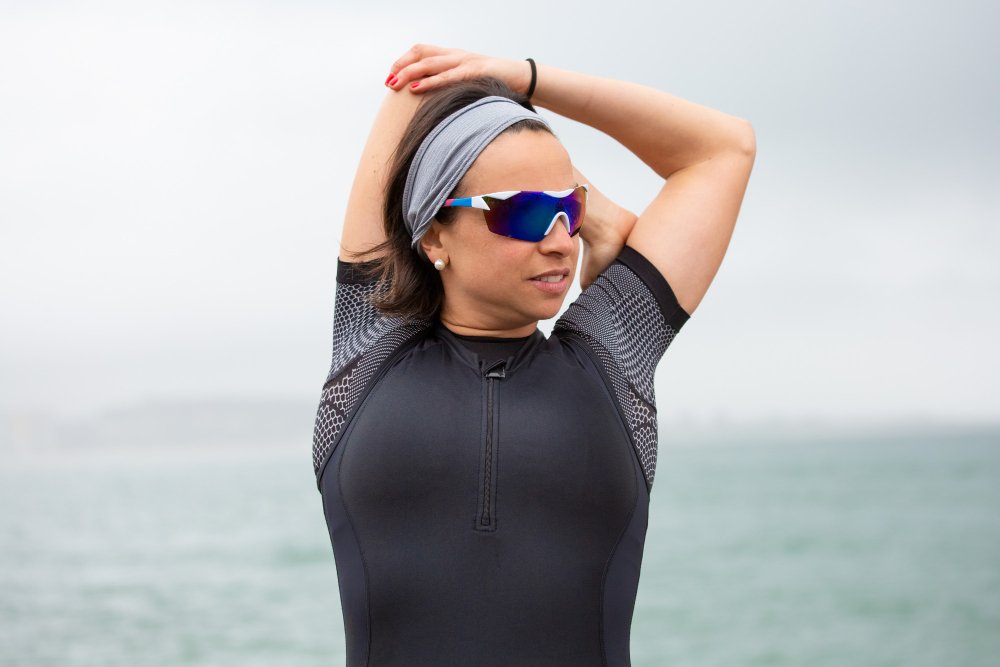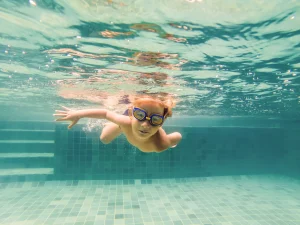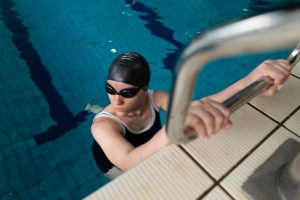Before the body reaches its full potential, warm-ups for swimmers are essential – both for elite athletes and for those who swim recreationally.
Although often neglected, warming up before training prepares the body for physical activity and enhances performance. Cooling down, on the other hand, significantly reduces the risk of injuries.
Here’s what you need to know about the science of warming up and cooling down, and how to apply them effectively to boost your training.
Why are warm-ups for swimmers important?
Warming up is the process of transitioning from a state of rest to one of physical exertion.
By warming up, swimmers gradually increase heart rate, improve blood circulation, and raise muscle temperature, which enhances tissue elasticity and movement efficiency.
Exercise physiology studies show that warmed muscles consume less oxygen and respond more quickly to neuromuscular stimuli – both crucial factors for performance in the water.
Warm-ups also activate the central nervous system, preparing reflexes, coordination, and reaction time. In swimming, where synchronisation of breathing, strokes, and kicks is critical, this neuromuscular preparation makes all the difference.
Evidence of this comes from a study published in the British Journal of Sports Medicine, which demonstrated that adding breathing exercises to traditional warm-ups can reduce times in 100m freestyle races among elite swimmers.
What is the purpose of cooling down?
Cooling down, or active recovery, helps the body return gradually to a resting state by lowering the heart rate.
It also improves muscle oxygenation, aiding the removal of residual substances that build up during exertion, such as metabolites.
Without this care, swimmers may experience muscle stiffness, prolonged fatigue, tingling, and greater vulnerability to repetitive injuries.
Cooling down also contributes to psychological recovery, serving as a closing ritual after intense practice. The brain recognises that the activity has ended and begins to relax, preparing the body for future sessions.
How should swimmers warm up and cool down?

Warm-ups for swimmers usually consist of three stages:
- General activation: light out-of-water exercises lasting 3–5 minutes, such as jogging on the spot, star jumps, or skipping. These increase blood flow and warm up the joints.
- Dynamic stretching: broad, controlled movements like arm swings, shoulder rotations, and trunk bends. The aim is to prepare joint mobility without overstretching.
- Specific activation: already in the pool, this includes light sets such as relaxed front crawl, kickboard drills, and extended strokes. This step adapts muscles to the technical demands of the main session.
A full warm-up should last 10–15 minutes and might include:
- 200m light front crawl
- 100m kicking with a board
- 100m gentle backstroke
- 4 × 25m freestyle focusing on breathing
Efficient cool-down for swimmers
After training or competition, cooling down should gradually reduce intensity and gently stretch the muscles.
A good in-water example is 200m of easy swimming alternating strokes, 100m of light kicking, and 100m of slow backstroke.
Out of the pool, static stretching is recommended, holding each position for 20–30 seconds.
Focus should be on the muscle groups most engaged in swimming: shoulders, lats, chest, hips, and calves. Examples include triceps stretch, chest opener against the wall, lower back stretch, and seated hip flexion.
The science of preventing injuries
One of the greatest benefits of well-structured warm-ups and cool-downs is injury prevention. Due to repetitive effort, swimmers may face shoulder, lower back, or knee issues.
Warm-ups promote joint lubrication and improve mobility, reducing friction and overload.
Cool-downs support muscle tissue recovery, lowering the risk of micro-injuries developing into inflammation.
Making these practices a non-negotiable part of swimming routine is more than just a technical detail – it is an investment in long-term health and performance.
Elite athletes such as Michael Phelps and Adam Peaty dedicate around 20 minutes before and after each training session to preparation and protection.
Whether at home, in a public pool, or in a training centre, these rituals at the start and end of each session guarantee better performance and longevity in swimming.
Would you like to learn how to apply warm-ups and cool-downs for swimmers in a safe and personalised way? Book a swimming lesson with Easy2Swim and take your results in the water to the next level.






